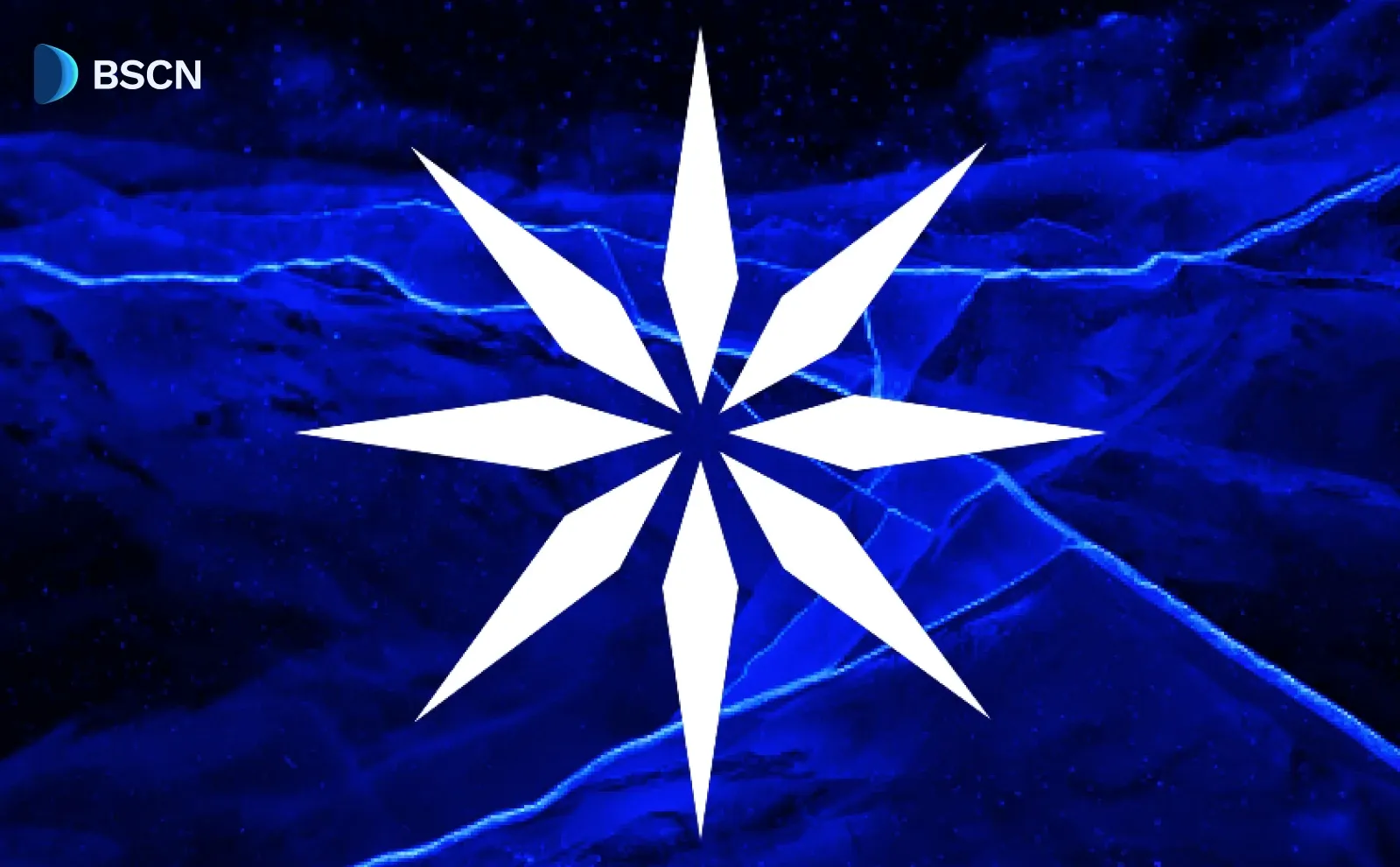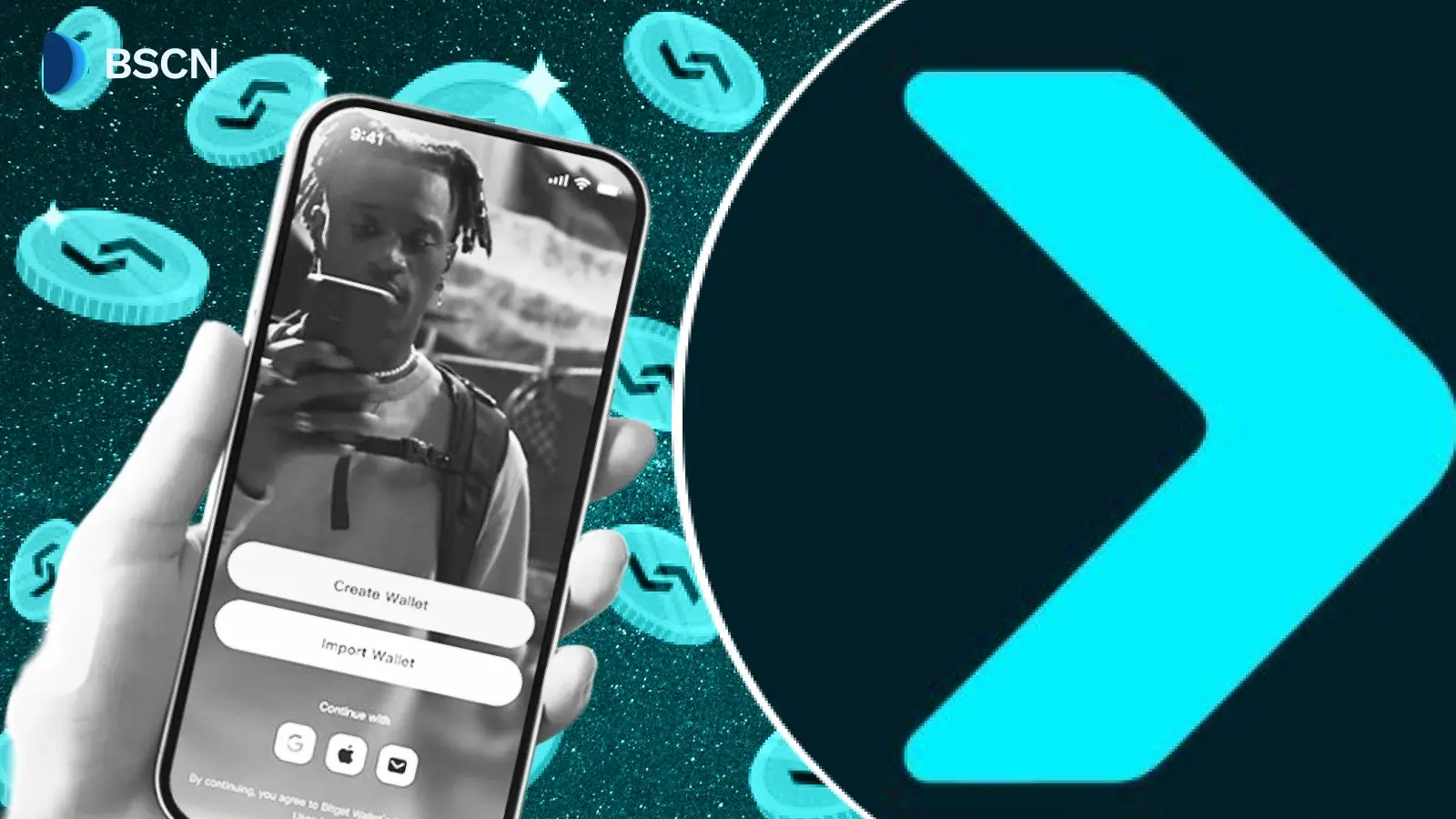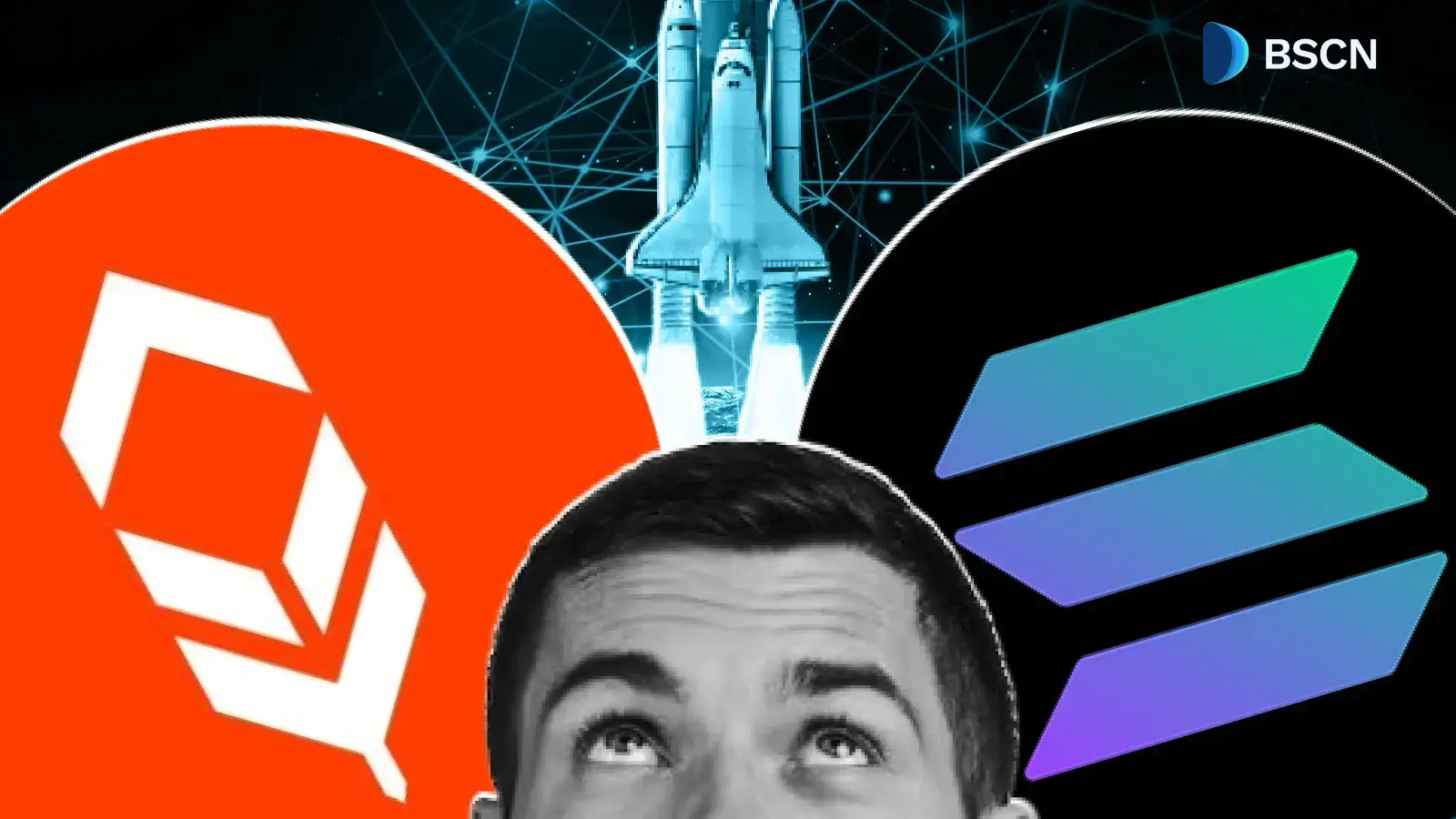Research
(Advertisement)
The $ZAMA Token Revealed: What We Know

Zama announces the $ZAMA token, powering a confidential blockchain protocol with FHE encryption, USD-pegged fees, and a burn-and-mint model.
UC Hope
November 17, 2025
(Advertisement)
Table of Contents
On November 14, 2025, the Paris-based open-source cryptography company Zama published details of its upcoming native token, $ZAMA, which will power the Zama Confidential Blockchain Protocol.
The token will serve as both the payment and staking asset for a cross-chain confidentiality layer built on fully homomorphic encryption (FHE), a technology that enables computation over encrypted data without decryption. Meanwhile, the platform has confirmed via its Litepaper that the token generation event (TGE) and mainnet launch are scheduled for the fourth quarter of 2025.
Zama’s Background and Funding
Zama was founded in 2020 by Rand Hindi, chief executive officer with a PhD in bioinformatics, and Pascal Paillier, chief technology officer and a 2025 IACR Fellow who previously led cryptographic research at Gemalto and Thales. The company now employs more than 90 people, with over half holding PhDs in mathematics or cryptography.
The firm has raised approximately $130 million, according to Cryptorank. Confirmed Funding rounds include:
- A $73 million Series A in March 2024 valued the company at around $200 million.
- A $57 million Series B completed in June 2025, led by Pantera Capital and Blockchange Ventures, pushed Zama’s valuation above $1 billion, making it the first FHE-focused unicorn.
Investors also include a16z Crypto, CoinFund, Metaplane, and several European venture funds. The capital has supported the development of open-source FHE libraries such as TFHE-rs, which has recorded more than 1 million downloads, and collaborations with NVIDIA and Intel on encrypted-computation pilots.
How the Zama Confidential Blockchain Protocol Works
The protocol operates as an overlay rather than a standalone Layer 1 or Layer 2 chain. Developers write confidential smart contracts in standard Solidity using the fhEVM library, which adds encrypted data types prefixed with “e” (euint, ebool, eaddress). Transactions and contract states remain encrypted on-chain; only authorized parties can decrypt outputs in accordance with the contract's rules.
The system combines three cryptographic primitives:
- Fully homomorphic encryption for computation on ciphertext
- Multi-party computation (MPC) through threshold key sharing for decryption
- Zero-knowledge proofs for public verifiability of encrypted operations
Execution is split between the host chain (Ethereum and compatible EVM chains initially) and off-chain components. The host chain stores encrypted data and emits pointers to FHE operations. Five initial coprocessors equipped with GPUs perform the heavy homomorphic computations, while 13 key management service (KMS) nodes running in AWS Nitro Enclaves handle decryption requests. Results are posted back to the chain via events.
Current public testnet performance stands at approximately 20 transactions per second. However, Zama projects 1,000 TPS in 2026 with optimized GPU clusters and over 100,000 TPS by 2027–2028 once custom application-specific integrated circuits (ASICs) are deployed. The network targets 128-bit post-quantum security and has undergone more than 34 weeks of audits by Trail of Bits and Zenith.
$ZAMA Economic Model
Zama employs a burn-and-mint equilibrium model. All protocol fees are paid in $ZAMA and immediately burned.
Coming Soon: The $ZAMA Token.$ZAMA is the native token of the Zama Confidential Blockchain Protocol.
— Zama (@zama) November 14, 2025
It will be used for protocol fees and staking. It follows a burn-and-mint model, where 100% of the fees are burned and tokens are minted to reward operators.
■ Users pay… pic.twitter.com/U1pyfthk01
New tokens are minted only to reward network operators according to their staked amount (using a square-root weighting formula). If fee revenue exceeds minted rewards, the circulating supply decreases; if rewards exceed fees, the supply grows. Initial annual minting is capped at 10 percent and can be adjusted by governance.
Fees are denominated in U.S. dollars through an oracle to provide predictable costs for developers.
Examples of base fees include:
- Encrypting transaction data: $0.005 to $0.50
- Reading a confidential balance: $0.001 to $0.10
- Decryption operation: $0.001 to $0.10
High-volume users receive up to 100x discounts based on 30-day rolling activity. A confidential ERC-20 transfer requiring three decryptions, therefore costs between $0.008 and $0.80 at base rates.
The network launches with 18 delegated proof-of-stake operators, including Ledger, Fireblocks, and several institutional staking providers. Each new operator must stake at least 0.5 percent of the circulating supply. Delegators receive approximately 80 percent of block rewards after operator commissions of up to 20 percent.
In the meantime, the full token supply and allocation schedule remain undisclosed ahead of the detailed tokenomics release expected before the TGE.
Launch Timeline and Recent Developments
- Public Testnet Launch: The Zama public testnet launched in the third quarter of 2025, enabling developers to test confidential smart contracts on Ethereum-compatible chains using the fhEVM library.
- Ethereum Mainnet and Token Generation Event: Integration with the Ethereum mainnet and the $ZAMA token generation event (TGE) are both planned for the fourth quarter of 2025, enabling full deployment of the confidentiality layer and token issuance.
- Acquisition of KakarotZK Labs: On November 5, 2025, Zama acquired KKRT Labs (also known as KakarotZK Labs), a zero-knowledge (ZK) research firm backed by Ethereum co-founder Vitalik Buterin, to enhance ZK rollup capabilities and target over 10,000 confidential transactions per second on chains like Ethereum and Solana.
- Joint Venture with PyraTz Labs for Zaiffer: Announced on November 12, 2025, Zama formed a €2 million joint venture with PyratzLabs to establish Zaiffer, a platform for confidential decentralized finance (DeFi) applications, including automated market makers (AMMs), lending, borrowing, and perpetuals, leveraging Zama's FHE protocol for encrypted transactions completed in under 5 seconds.
Conclusion
The Zama Confidential Blockchain Protocol introduces a practical method for deploying end-to-end encrypted smart contracts on existing EVM chains without requiring users or developers to manage new cryptographic keys manually.
By pegging fees to dollars, burning all revenue, and tying new issuance directly to network usage, the $ZAMA token is structured to align economic security with actual demand for on-chain privacy. With mainnet and token launch scheduled before the end of 2025, Zama provides the most advanced production-ready FHE infrastructure currently available in the blockchain ecosystem.
Sources:
- Website: https://www.zama.ai/
- $73M Series A Funding: https://techcrunch.com/2024/03/07/zamas-homomorphic-encryption-tech-lands-it-73m-on-a-valuation-of-nearly-400m/
- Series B Funding: https://www.coindesk.com/tech/2025/06/25/zama-raises-57m-becomes-first-unicorn-involved-with-fully-homomorphic-encryption
- Joint Venture with PyraTz Labs for Zaiffer: https://www.dlnews.com/external/zama-and-pyratzlabs-establish-zaiffer-a-joint-venture-for-confidential-and-compliant-onchain-finance/
- KakaritZK Labs Acquisition: https://finance.yahoo.com/news/zama-acquires-buterin-backed-zk-131845284.html
- Litepaper: https://docs.zama.org/protocol/zama-protocol-litepaper
Read Next...
Frequently Asked Questions
When is the $ZAMA token launching?
The token generation event and Ethereum mainnet launch are both scheduled for Q4 2025, with founder confirmation that it will occur before the end of the year.
What is fully homomorphic encryption in the Zama protocol?
FHE allows smart contracts to perform calculations on encrypted data and produce encrypted results that only authorized parties can decrypt, keeping inputs, intermediate states, and outputs private on a public blockchain.
How much does a confidential transaction cost on Zama?
Base fees range from $0.001 to $1 per operation depending on type; a typical confidential ERC-20 transfer costs $0.008 to $0.80, with heavy users eligible for discounts up to 100×.
Disclaimer
Disclaimer: The views expressed in this article do not necessarily represent the views of BSCN. The information provided in this article is for educational and entertainment purposes only and should not be construed as investment advice, or advice of any kind. BSCN assumes no responsibility for any investment decisions made based on the information provided in this article. If you believe that the article should be amended, please reach out to the BSCN team by emailing [email protected].
Author
 UC Hope
UC HopeUC holds a bachelor’s degree in Physics and has been a crypto researcher since 2020. UC was a professional writer before entering the cryptocurrency industry, but was drawn to blockchain technology by its high potential. UC has written for the likes of Cryptopolitan, as well as BSCN. He has a wide area of expertise, covering centralized and decentralized finance, as well as altcoins.
(Advertisement)
Latest News
(Advertisement)
Crypto Project & Token Reviews
Project & Token Reviews
Comprehensive reviews of crypto's most interesting projects and assets
Learn about the hottest projects & tokens
Latest Crypto News
Get up to date with the latest crypto news stories and events


![Are Decentralized Token Folios (DTFs) the Next Index Revolution? [Report]](/_next/image?url=https%3A%2F%2Fstorage.bsc.news%2F3%2FWeekahead_52_6_fc2d07e504.webp&w=1920&q=70)














